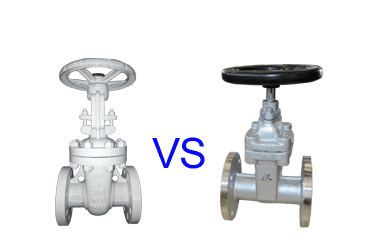Rising Stem Gate Valve VS Non-rising Stem Gate Valve
Nov 28,2019 From: Zhengzhou Free Fluid Control Technology Co.,Ltd
According to the structure of valve stem, gate valve can be divided into Rising Stem Gate Valve and Non-rising Stem Gate Valve,the main difference between Rising Stem Gate Valve and Non-Rising Stem Gate Valve.
1. Rising Stem Gate Valve: The stem nut is on the bonnet or yoke. When opening or closing the gate, stem nut is rotated to raise and lower the stem. This structure is advantageous for the lubrication of valve stem, and the degree of opening and closing is obvious, so it is widely used.
The Rising stem gate valve drives the gate to lift and lower together, and the transmission thread on the valve stem is outside the valve body. Therefore, the position of the gate can be intuitively judged according to the moving direction and position of valve stem, and the transmission thread is lubricated and protected from fluids, but it requires a large installation space.

2. Non-rising Stem Gate Valve: The stem nut is inside valve body and contact with the medium directly. When opening or closing the gate, it is through the rotating of valve stem. The advantage of this construction is that the height of gate valve remains the same, so the installation requires small room and is suitable for big gate valves or valves that have limited installation space. Non-rising stem gate valve is usually equipped with an open and close indicator . But it also has some disadvantages, like the stem threads won't get lubricated, and also will be etched by the medium directly and easily damaged.
3.The threaded part of stem can't be seen on the non-rising stem valve, but is visible on rising stem gate valve.
